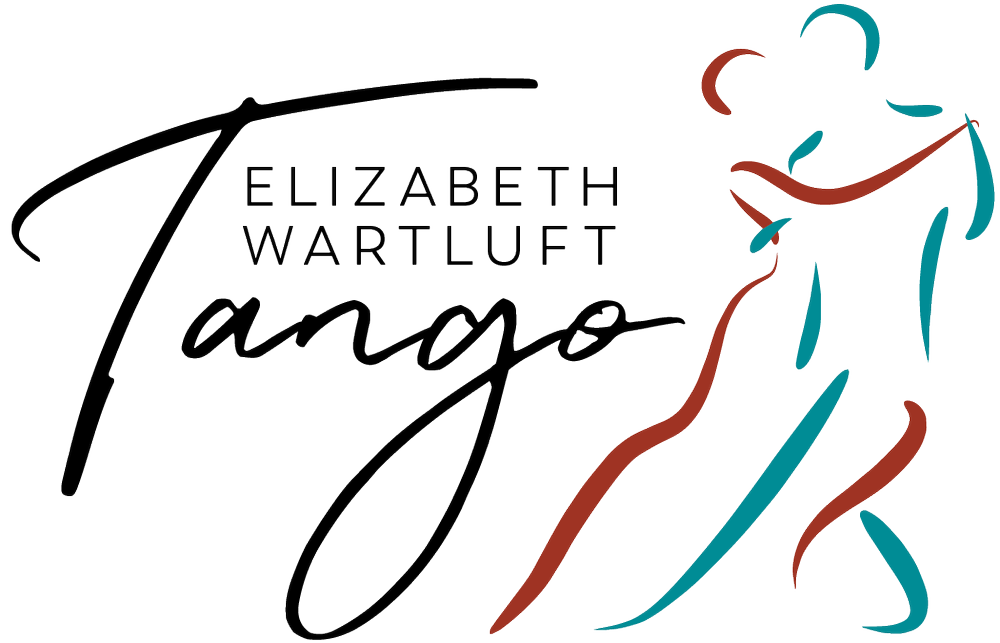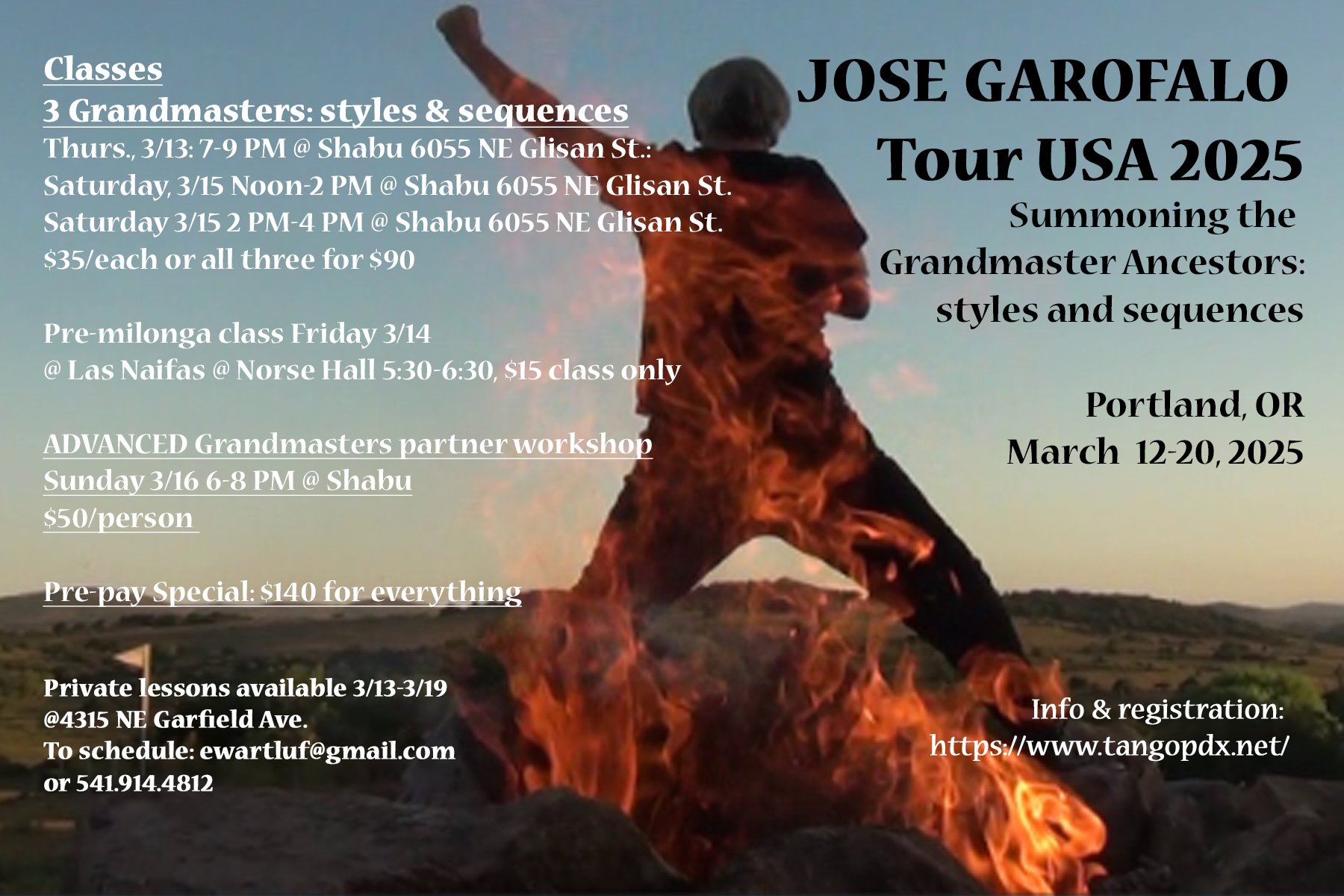My student, Debbie, likes to describe a good tango as “Juicy!” You may use a different word, but I bet you have a way to describe your favorite tandas, or an especially wonderful dance. How can we make MORE of our dances feel that good? What makes a tango nice and juicy?
Texture
Although having a large vocabulary of moves may make a dancer feel confident, that is not high on my “juicy” tango list. If you know a few steps and use them in diverse ways, your dance can have texture, rather than flat lining into blandness. Don’t worry, we are still working on learning new combinations; but that is less important in building a dance that feels great :-)
I like to use varied sizes or flavors of steps to build a textured dance. I discussed the idea of having different flavors/volumes/textures in detail in my 6/6/24 post on milonga. This is even more possible in tango. To work on this in your dance, try my Three Bears game: Too Big, Too Small, Just Right. Dance to a song and find how big or small you can move to that specific piece of music, with that partner, and use the entire range that works. Let the music expand your technique instead of your vocabulary list! Even three or four moves can feel expansive and varied.
Timing
Playing with the timing of my dance to the music and in collaboration with my partner, is the key component of juicy. For the next few weeks in class, we will explore slow motion, pauses, and accelerating — things we sometimes forget in the worship of “staying on the beat.”
Slow-motion (camera lenta)
OK, I LOVE slow motion musicality in my tango. I love stretchy, lyrical tangos that allow me to squeeze all the lovely juicy bits out of a song. Slow motion is not easy, as it requires breathing and balance, mastery over your body to move like a big cat, on balance, and respond to the music. I embrace that challenge because it gives me so much more power and elegance and eloquence in my dance.
I try to let the music give me ideas, rather than imposing a plan on my dance. When the music encourages me to stretch into slow motion, I let that happen. I try to let my body, not my mind, take the lead. When I really know a song, then I can respond organically with more ease. Hint: listen to tango music :-)
Pauses (pausas)
Pauses (which are not stops!) have a feeling of catching a wave, stretching until the moment is right, and re-releasing all that energy back into traveling. To create a good pause, the leader needs to be on axis and stable so that the follower feels the pause as potential, either for adornos, or for a great gathering of energy and breathe, a moment of pure being—before reentering the movement flow of the dance. Leaders: remember a follower may need 3-4 seconds of pause simply to figure out that there is a pause! Be prepared to put both feet down, suspend the follower gently, and let them find the pause before moving on!
Moments of acceleration
In class, we have already been playing with how to use traspies and cruzadas to speed the follower up or slow them down inside of the dance. Those moments of groove, power, putting the pedal down and MOVING, are the flip side of slow motion, Again, I am looking for an organic reaction to the music (and to my partner) to create the variations in my dance that make it musical. We will keep working on this Thursdays in class.
An easy place to adjust the speed of the dance is the traspie. As the follower rebounds back to me, I can use the second half of the move to slow them down to a pause OR speed them up for a big move OR keep the momentum going in the direction of the next part of the dance. Remember that this happens after the follower’s heel hits, their hips cushion into the step, and they are rebounding back at you. It’s all about timing, isn’t it?
Connection
There is more than timing to make a dance juicy. The embrace and the energy of the couple connecting to each other—that is the secret to a juicy dance. A good, adjustable, connected embrace can make the difference between an OK dance, and a truly memorable tanda. We will explore how the embrace adjusts to different bodies so that we can make every dance better. What if we had an evening where EVERY dancer felt amazing in our embrace? Wow, what a goal!!
Follower input
As a follower, you have as much potential to make a memorable dance as the leader does. Your musicality, your embrace, your presence, and depth of connection, create the dance. You are the motor of the dance. No motor? The car will not go. Put more into your dance to inspire the leader to give you more! It is still 2024, so it’s still all about collaboration!
See you in class!
Join us for class for the next few weeks as we explore these ideas in our tango! Thursdays at Shabu Studios. Warmup/fundamentals at 7 PM; All levels at 7:30 PM; and advanced intermediate at 8:30 PM. Come alone or bring a partner, and create YOUR juicy tango!
This is also a great focus for a few private lessons. Sometimes, in-depth work on your dance needs one-on-one attention.





